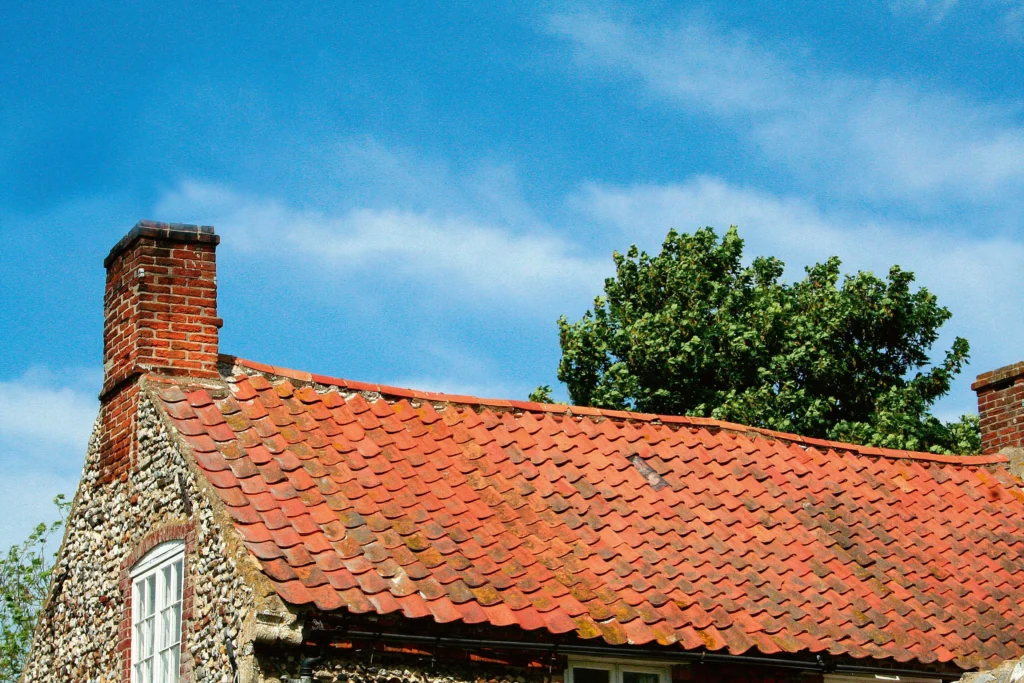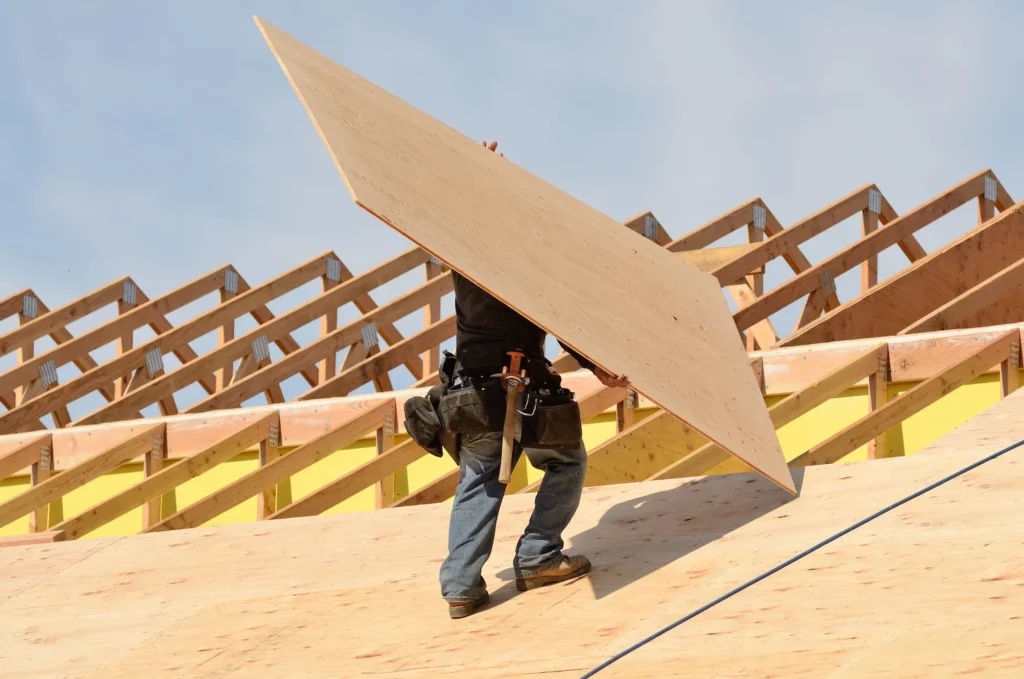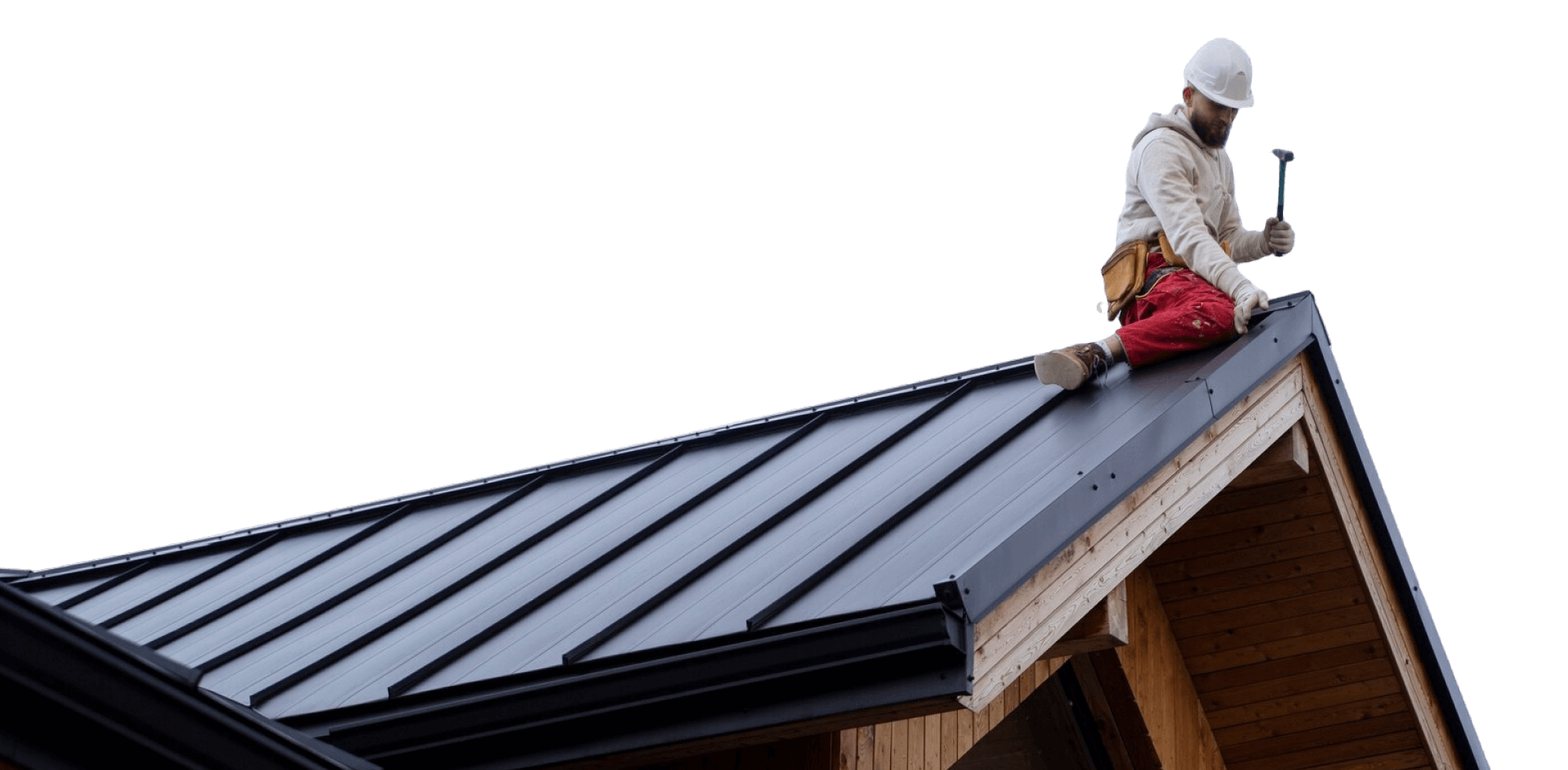What’s the Best Roof Decking Material? Pros and Cons of Top Options
When it comes to constructing a reliable roofing system, most homeowners immediately think of shingles or tiles, but what about what’s underneath? Roof decking is the unsung hero of your roof, acting as the structural foundation that holds everything together. It plays a critical role in supporting your roof’s weight, braving the elements, and maintaining the integrity of your home. So, what is the best option for roof decking? This guide from Proper Roofing breaks down the most common roof decking materials, their strengths and weaknesses, and how to choose the right one for your needs. Whether you’re building a new roof or replacing an old one, understanding your decking options is essential for making a smart, long-term investment.
What Is Roof Decking?
Roof decking, also called roof sheathing, is the base layer that sits atop your home’s rafters or trusses and provides a flat surface for your roofing material to be attached to. It acts as the “floor” of your roof, tying everything together structurally and ensuring the weight of the roof is evenly distributed.
But decking isn’t just about structure—it also helps manage moisture, prevents leaks, and plays a role in the insulation and energy efficiency of your home. Roof decking is used in a wide variety of roofing systems, from traditional pitched roofs to modern flat roofs, and in both residential and commercial construction.
Key Factors to Consider When Choosing Roof Decking

Picking the right roof decking material isn’t just about choosing the cheapest option. You’ll need to evaluate several important factors:
- Climate and Weather Exposure: Living in a humid or rainy area? Moisture-resistant materials like plywood or composite panels will hold up better over time. In snowy areas, strength and load-bearing capacity are key.
- Budget Constraints: Some materials, like OSB, offer a budget-friendly solution, while others, like composite panels or concrete, may come with a higher price tag, but offer lower maintenance or longer life.
- Building Codes and Load Requirements: Your local codes may limit which materials can be used depending on weight, span, or fire-resistance standards. Make sure you’re compliant.
- Roofing Material Compatibility: Some roofing systems (like clay tiles or metal panels) require more rigid or specialized decking materials than asphalt shingles.
- Maintenance and Longevity: Are you looking for a long-lasting, low-maintenance option, or are you comfortable with more frequent upkeep? Your lifestyle and long-term plans should factor into the decision.
Top Roof Decking Materials: Pros and Cons
Let’s explore the most commonly used roof decking materials, each with its own unique set of advantages and challenges:
1. Plywood
Plywood is one of the most popular roof decking materials, especially in residential construction. It’s made by gluing together thin layers of wood veneer, creating a strong and durable panel.
Pros:
- Strong and reliable for most roof types
- Good resistance to moisture when properly sealed
- Easy to install, cut, and work with
Cons:
- More expensive than OSB
- Heavier, which may affect your home’s structural design or increase labor costs
Best For: Homes in wet or coastal climates, or where structural strength is a priority.
2. Oriented Strand Board (OSB)
OSB is made from compressed wood strands and adhesives. It’s widely used because it’s cost-effective and available in large, uniform sheets.
Pros:
- Affordable and economical
- Consistent and smooth texture
- Readily available at most suppliers
Cons:
- Less resistant to water than plywood
- Can swell, warp, or deteriorate when exposed to prolonged moisture
Best For: Budget-conscious projects or homes in dry climates.
3. Tongue-and-Groove Boards
These solid wood boards lock together via a groove and tongue system and were commonly used in older homes before plywood and OSB became standard.
Pros:
- Extremely strong and rigid
- Ideal for exposed ceilings—adds rustic charm and architectural detail
Cons:
- High material and labor costs
- Heavy and time-consuming to install
Best For: Custom homes or high-end renovations with open roof designs.
4. Concrete Decking
Concrete roof decks are common in commercial buildings but are occasionally used in custom residential projects, especially in flat or low-slope roofs.
Pros:
- Extremely durable and long-lasting
- Fireproof and pest-resistant
- Excellent for flat roofs and multi-use decks
Cons:
- Very heavy, requires reinforced structures
- Expensive and labor-intensive to install
Best For: Commercial buildings or luxury homes with flat rooftops or rooftop patios.
5. Metal Decking (Steel or Aluminum)
Metal decking is made from corrugated steel or aluminum panels. It’s mostly used in commercial settings, but is gaining interest in some modern residential designs.
Pros:
- Lightweight yet structurally strong
- Resistant to termites, rot, and fire
- Recyclable and environmentally friendly
Cons:
- Prone to corrosion without protective coatings
- Can be loud during rain or hailstorms
- More expensive than wood-based options
Best For: Commercial buildings, metal roofing systems, or eco-friendly modern homes.
6. Composite or Synthetic Panels
These are newer, engineered products often made from recycled materials or synthetic blends. They are designed to offer durability, moisture resistance, and ease of installation.
Pros:
- Lightweight and eco-conscious
- Resistant to rot, mold, pests, and moisture
- Low maintenance
Cons:
- More expensive upfront
- Limited availability in some areas
- May not be accepted in all local building codes
Best For: Environmentally conscious homeowners looking for modern solutions.
Comparison Table of Materials
| Material | Cost | Durability | Weight | Moisture Resistance |
| Plywood | $$$ | High | Heavy | Good |
| OSB | $$ | Moderate | Moderate | Fair |
| Tongue-and-Groove | $$$$ | Very High | Very Heavy | Good |
| Concrete | $$$$ | Excellent | Extremely Heavy | Excellent |
| Metal (Steel/Aluminum) | $$$ | High | Light | Excellent (treated) |
| Composite/Synthetic | $$$$ | High | Light | Excellent |
Choosing the Right Roof Decking for Your Home
Finding what is the best option for roof decking depends on aligning your needs with the right material.
Ask yourself:
- Is your home in a rainy, snowy, or wildfire-prone area?
- Are you prioritizing initial savings or long-term durability?
- Will your roof be visible from the inside or used as a patio?
- Do you want eco-friendly or traditional building materials?
Each answer points to a different solution—and making the right choice now can save you from expensive issues later.
Consulting Langley Roofing professionals, like the experts at Proper Roofing, ensures you’re not just picking a material—you’re choosing a system that works best for your home’s structure and your local conditions. Their experience can help you avoid costly mistakes and ensure long-term performance.
Trust the Experts at Proper Roofing
Choosing the right roof decking material is not a one-size-fits-all decision. Working with trusted Langley roofing professionals, like the team at Proper Roofing, ensures your material choice supports both your structure and the demands of your local environment. From evaluating load requirements to understanding local building codes, our experts can guide you every step of the way.
Looking For Expert Advice On Your Roof Decking Options?

Proper Roofing is here to help you make the right choice for your home or business.
Contact our experienced team for a full roof evaluation and personalized recommendations.
We’ll guide you through material selection, installation, and long-term care.
Let Proper Roofing build the strong foundation your roof deserves—reach out to our Langley Roofing team today!
Check out our social media pages below:
Check out some of our blogs to help with your Roofing needs:
How to Repair Leaking Gutter Corners


